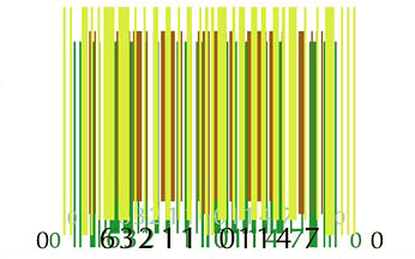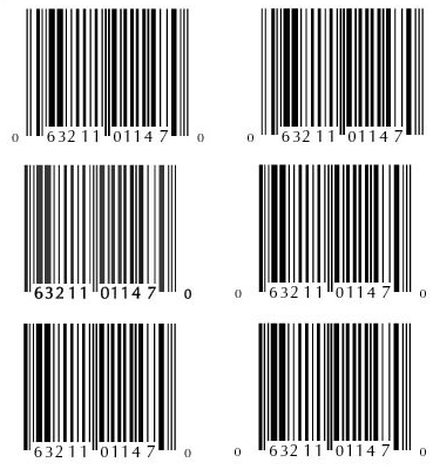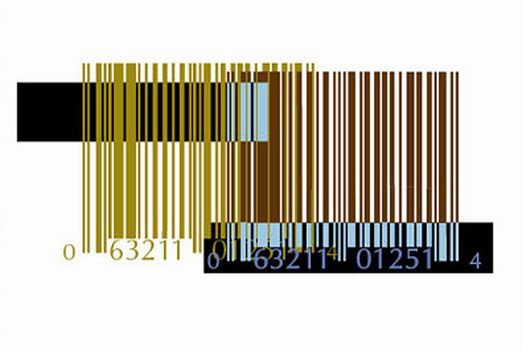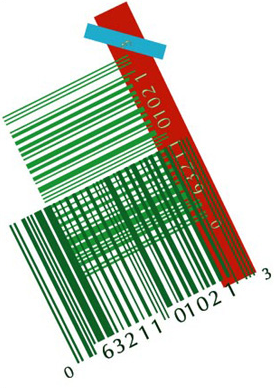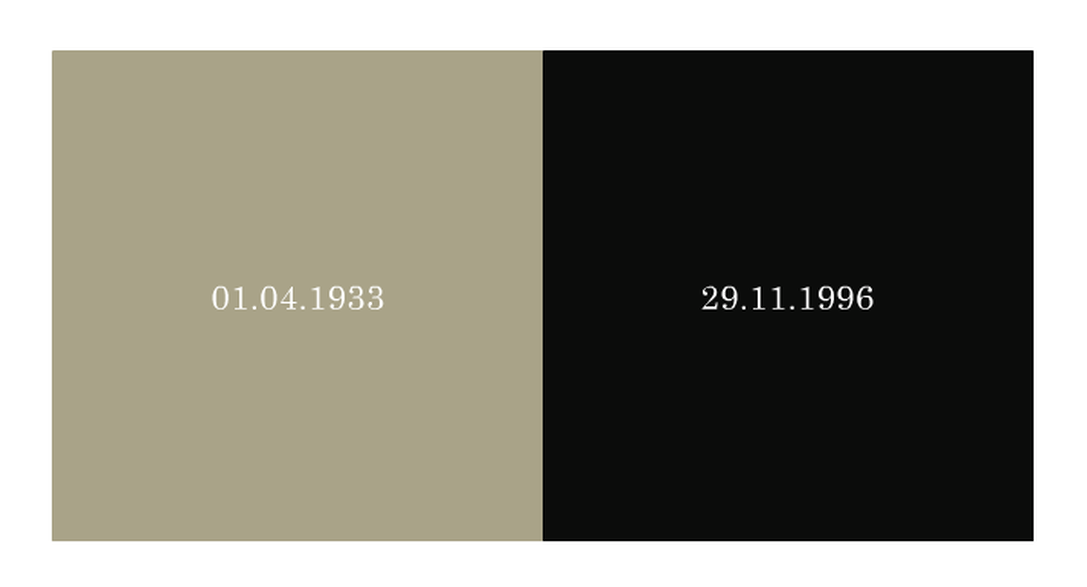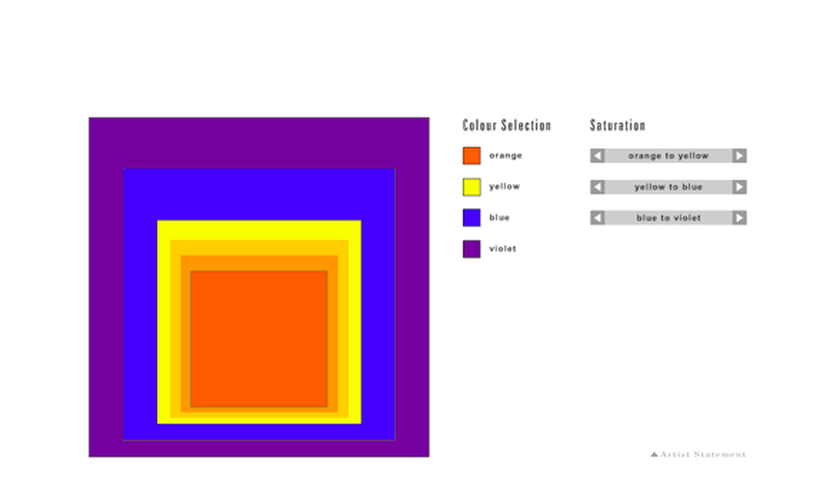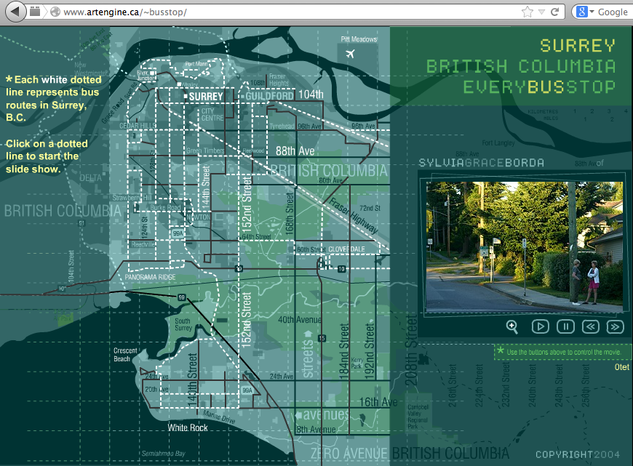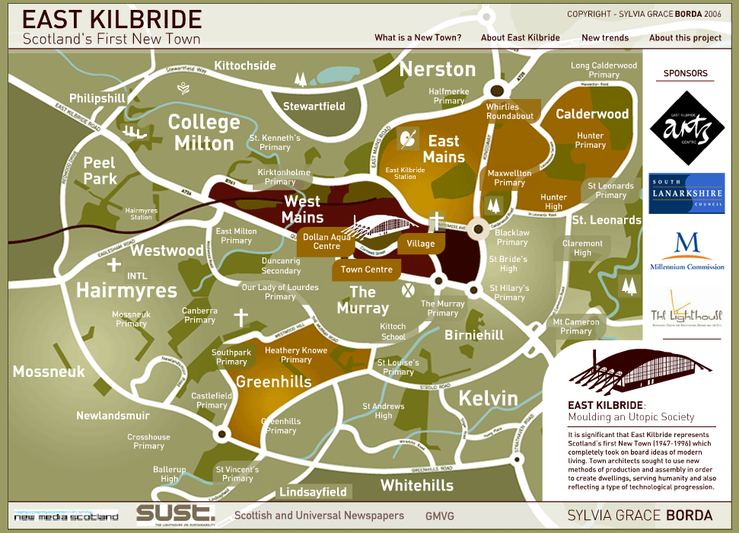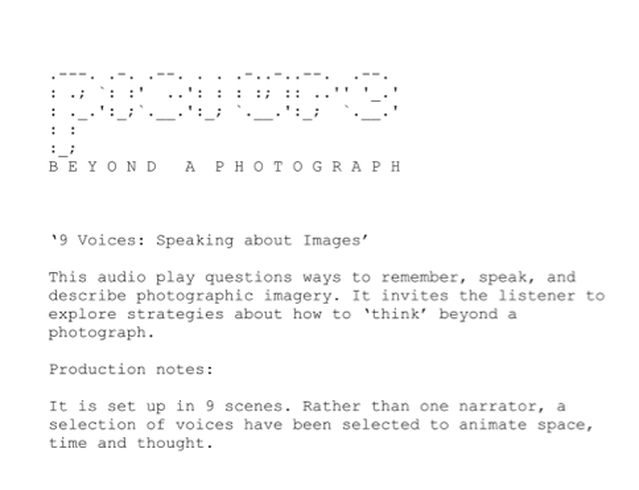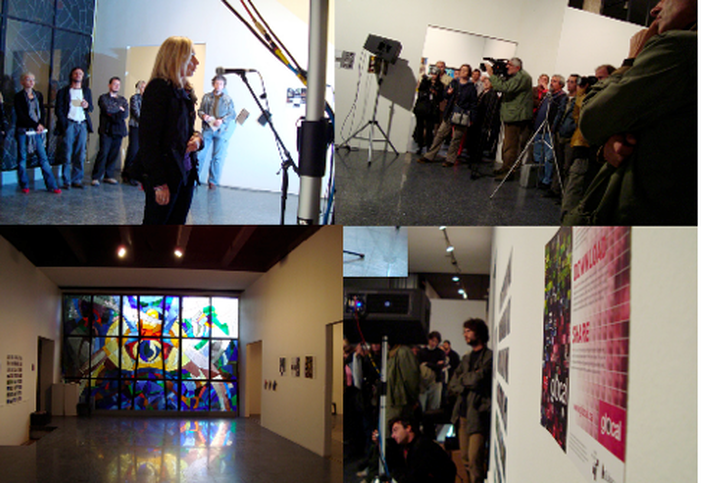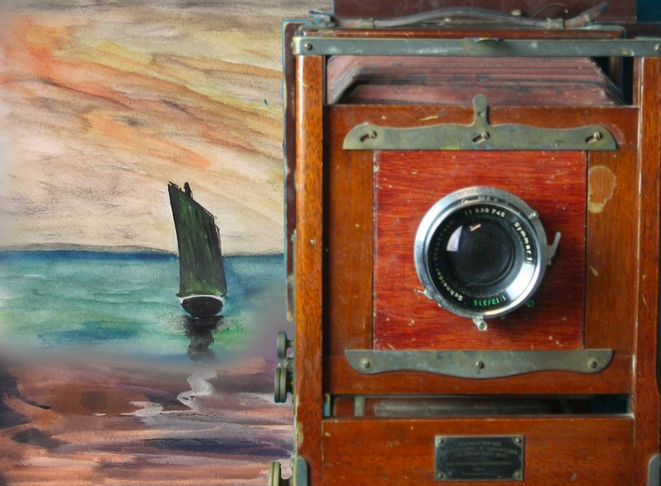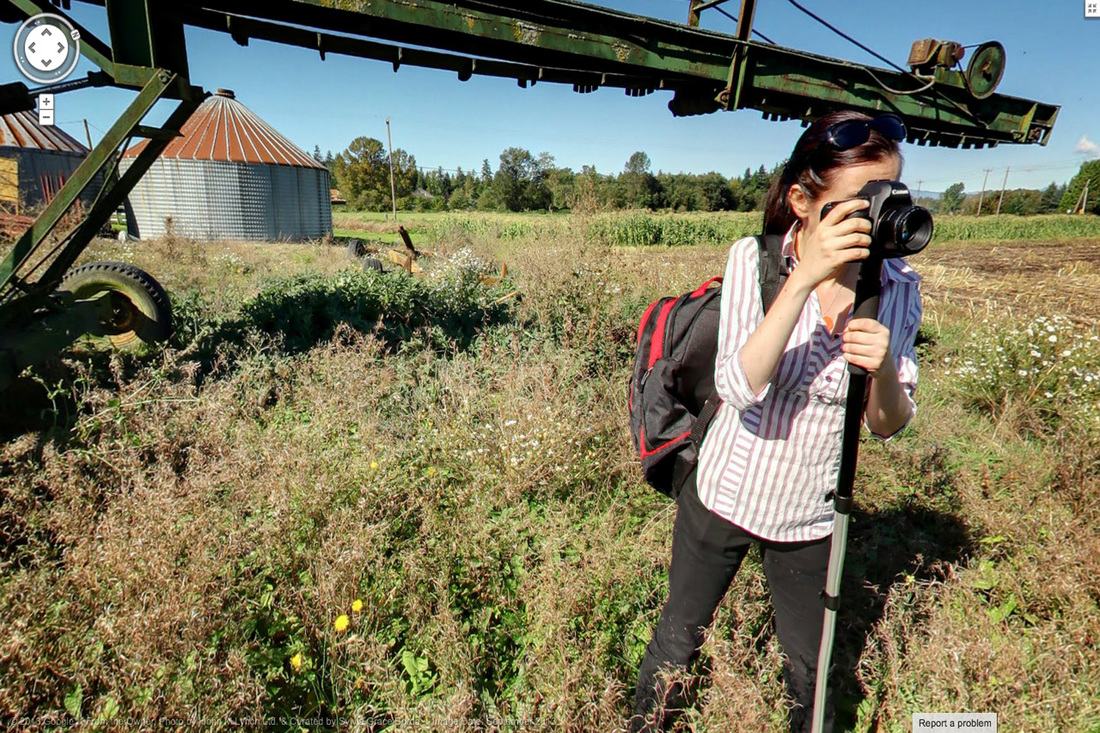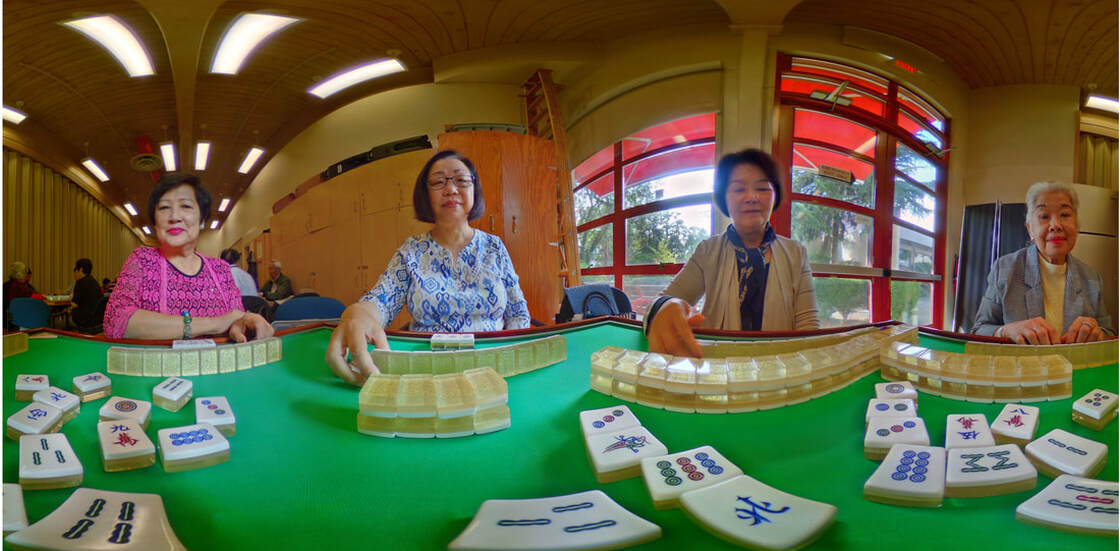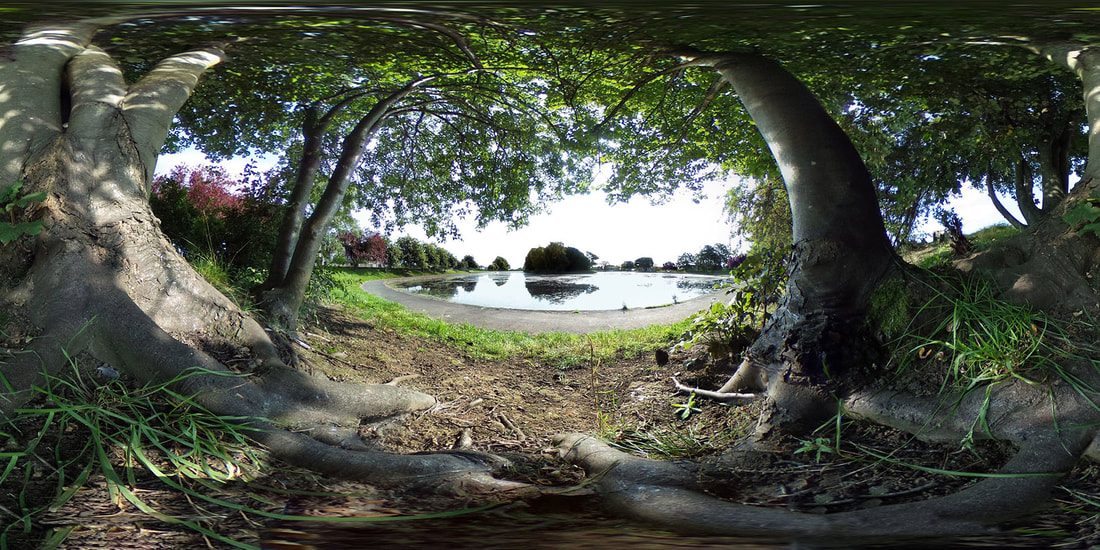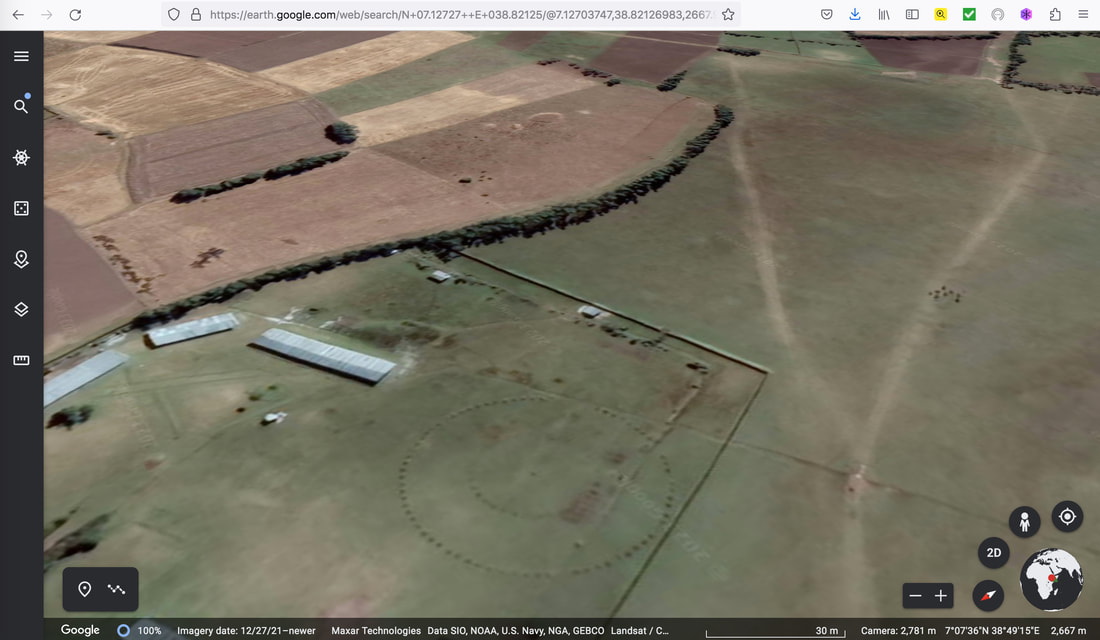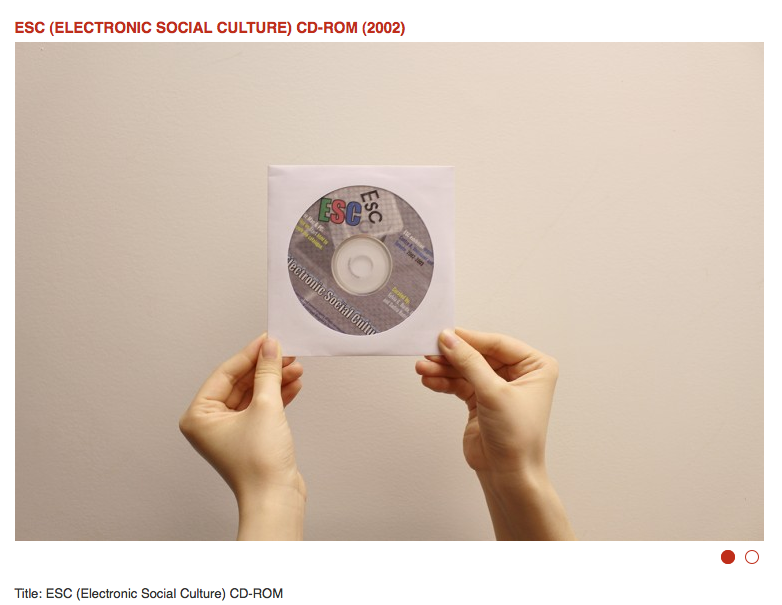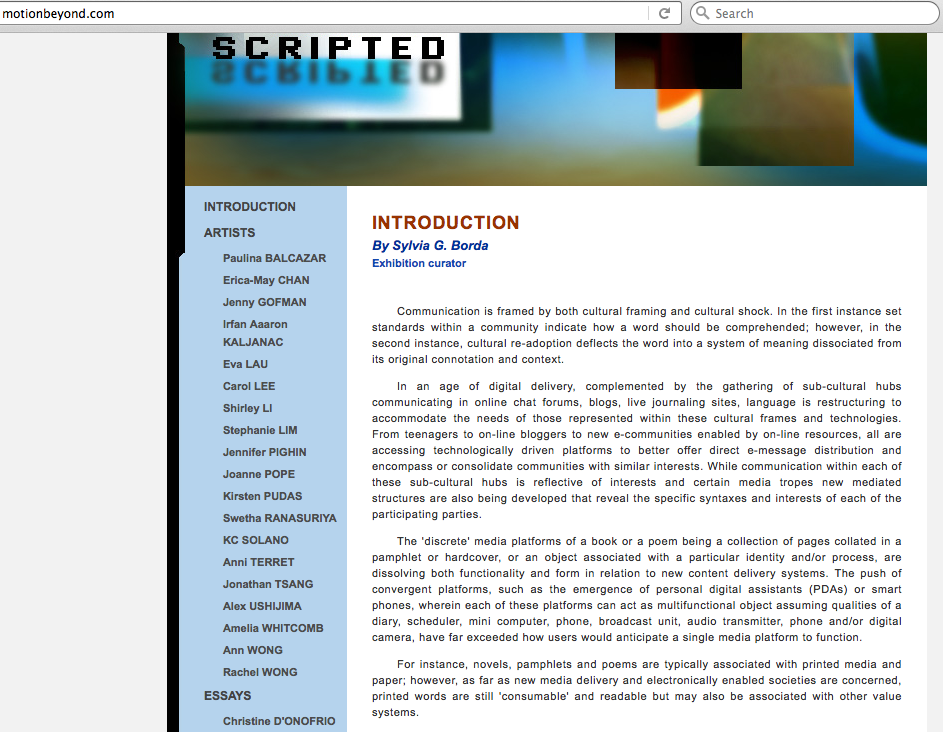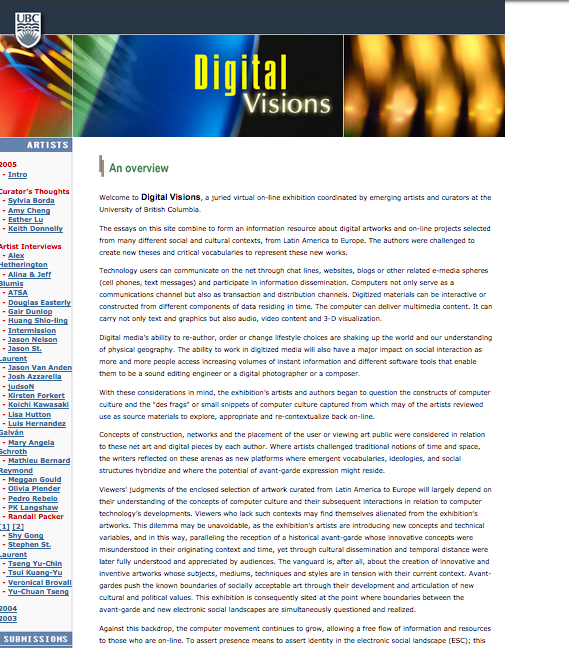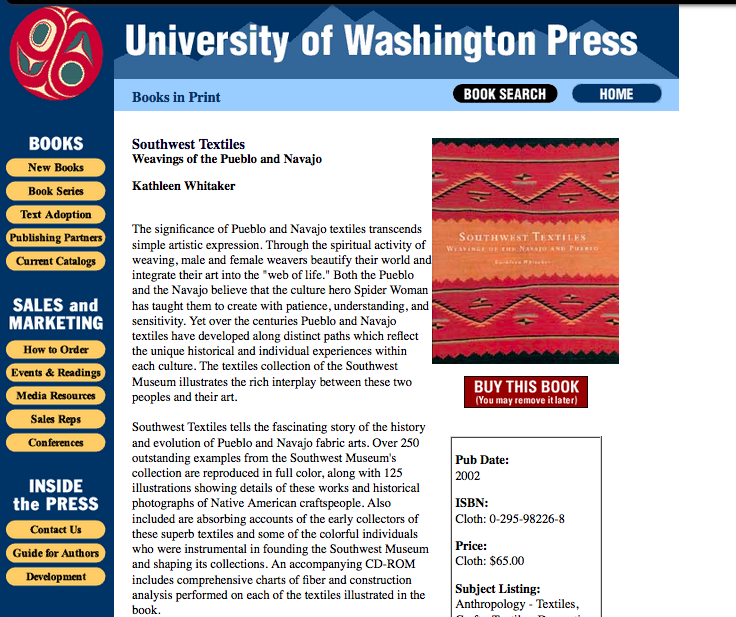DIGITAL ART
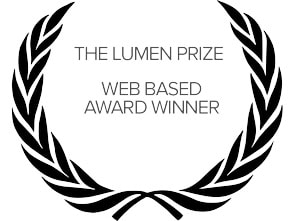
SUMMARY
1999 - present
Sylvia remains very interested in creating accessible digital artworks embracing historical fine art and design values while addressing computer aesthetics, contemporary social values and pressing problems of our time.
As a digital artist, she has been recognized for her pioneering digital collaborative work over the last decade. In 2022 Sylvia was short-listed for the prestigious globally juried Falling Wall Foundation Award for Art-Science contributions. This was followed by a further nomination for the Lumen Futures Prize, an award for outstanding work that explores future relationships between society and technology related to bio and sustainable technologies. Related to this prize Sylvia was fortunate to have already been awarded a Lumen Prize in Web Arts (2016) for her progressive digital arts project, Farm Tableaux, examining sustainable food production. Sylvia has been pioneering media arts in Canada since 1996.
The following list gives a chronological overview to some of Sylvia's from key past to current and on-going digital art projects.
1999 - present
Sylvia remains very interested in creating accessible digital artworks embracing historical fine art and design values while addressing computer aesthetics, contemporary social values and pressing problems of our time.
As a digital artist, she has been recognized for her pioneering digital collaborative work over the last decade. In 2022 Sylvia was short-listed for the prestigious globally juried Falling Wall Foundation Award for Art-Science contributions. This was followed by a further nomination for the Lumen Futures Prize, an award for outstanding work that explores future relationships between society and technology related to bio and sustainable technologies. Related to this prize Sylvia was fortunate to have already been awarded a Lumen Prize in Web Arts (2016) for her progressive digital arts project, Farm Tableaux, examining sustainable food production. Sylvia has been pioneering media arts in Canada since 1996.
The following list gives a chronological overview to some of Sylvia's from key past to current and on-going digital art projects.
|
Exhibitions:
2001 Present (MFA Graduate Exhibition), Belkin Gallery, University of British Columbia (catalog) 2001 DIGITALIS: An inaugural exhibition of Digital Art, Moonbase Gallery, Vancouver, BC Curators: James KM with Ann Rosenberg (November 23 – December 14, 2001) Reviews: Leith, David. “At the Nexus of Digital Art and Technology” The Georgia Straight newspaper. Dec 13-20, 2001. Atkan, Nancy. “Digital Art in Cuba: Increasing enthusiasm for Digital Art” New York Arts Review, volume 2 issue no 7, July 2002 Other: Work included in the proceedings from COLOQUIO INTERNACIONAL ARTE DIGITAL including posting of “El ritmo de la percepción en el Arte Digital / The Pace of Perception in Digital Art” by Sylvia G Borda Special feature interview with Paul Grant about Capital Cities Exhibition and the 4th International Cuban Digital Art Symposium in Havana "North by Northwest," on CBC Provincial Radio (690 AM), Vancouver, B.C., 30 June, 2002. |
EARLY DIGITAL ARTWORKS
1996-2000 Barcodes In this digital series Sylvia addressed the ideologies of two modern art movements, Pop and Hard Edge or Minimal painting, in their most reduced forms she was interested in these two areas given the wealth of information available about these art movements, and the on-going legacies left by artists from this period. Pop art took everyday forms and reverted these to unanticipated form for public delivery. Sylvia decided to take Pop and make it the form. In using Warhol’s soup can paintings/silkscreen as my base, she could cite a well critically acclaimed series of artworks and site them in relation to their most basic indexical form available today, the barcode. The barcode represents the smallest indexical unit available in today’s culture that maintains the identity of a product. In the artist reproducing some of Warhol’s pictures in this reduced form, an irony is formed between culture and perception. Warhol’s pieces were recognizable by their form, shape and direct reference to Campbell soup can labels, by using barcodes to reference the soups, the relationship between the viewer and the object becomes distant and estranged. The reception of the barcode as an artform parallels Pop’s earliest reception – it is seen as cold and mechanical. The work, though produced by an automated mechanism, the computer, must be hand plotted. The barcode becomes a metaphor for societal differences in perceiving computer generated art. The codes displayed in large scale are easily recognizable in terms of their purpose; however, the overlapping codes lose indexical use and become an abstract field of lines reminiscent of the Hard Edge compositions of late modernist painters like Newman and Noland. |
Minimalist Portraits - CYMK
1999-2000
Minimalist Portraits ( Available for interactive viewing at https://web.archive.org/web/20040607085630/http://www.galeriesawgallery.com/ )
Sylvia was interested in addressing the ideologies of non representational composition -- everything from Neoplasticism to Hard Edge or Minimal painting -- in their most reduced forms.
Her intent in invoking from Minimalist strategies was ironic. Well known artists are appropriated in name and form and consequently become a by-product of their own “signature style.” Her recitations invoke a familiar form (the monochrome squares and grids commonly associated with artists such as Donald Judd, Dan Flavin, Malevich, etc.) while seeking to move away from the ideologies animating the historical “originals.” Hand painted objects evaporate into an endlessly reproducible computer generated form.
The artists’ birth and death dates are translated into tonal fields and plotted against a CYMK (cyan, magenta, yellow, black) scale to produce a tone representative of the artist’s life. The cycling birth and death dates creates a new work –a pulsating pair of binary squares that cycles through muted greys, greens and browns.
Barnett Newman is considered one of the key precursors of Minimalism, having pushed both the scale and composition of hard edge paintings to their limit. In this work, his appears as the brightest set of squares – perhaps reflective of his own, largely unconscious contribution to the birth of the Minimalist movement.
The dates of these artists in her sampling ultimately produce muted chromatic images, creating a visual somberness not readily associated with the colorful fields these artists are best known for. The grey scale diptychs create a visual elegy or ode to these artists, simultaneously presenting a new kind of artforms which most of the artists she cites could not have anticipated evolving from their own work. Sylvia's salvaging and recontextualization of the work of predominantly key American male artists is also meant to insert a female presence into a movement which has historically been male-dominated, one which in fact has constantly worked to suppress the work of female artists like Jo Baer or Anne Truitt, whose work shares important formal parallels with that of their better-known male companions.
Artists
07.03.1872 | 01.02.1944 Piet Mondrian
26.02.1878 | 15.05.1935 Malevich
19.03.1888 | 25.03.1976 Joseph Albers
19.02.1899 | 02.11.1968 Lucio Fontana
29.01.1905 | 03.07.1970 Barnett Newman
24.12.1913 | 30.08.1967 Ad Reinhardt
03.06.1928 | 12.02.1994 Donald Judd
04.04.1933 | 29.11.1996 Dan Flavin
Minimalist Portraits launched the opening of SAW Gallery (Ottawa, Canada) new e- galleries in 2005. The exhibition was curated by SAW Video curator, Jason St-Laurent, and accompanied by an essay written by UK media theorist, Peter Ride.
Still below: Dan Flavin, Minimalist Portrait
1999-2000
Minimalist Portraits ( Available for interactive viewing at https://web.archive.org/web/20040607085630/http://www.galeriesawgallery.com/ )
Sylvia was interested in addressing the ideologies of non representational composition -- everything from Neoplasticism to Hard Edge or Minimal painting -- in their most reduced forms.
Her intent in invoking from Minimalist strategies was ironic. Well known artists are appropriated in name and form and consequently become a by-product of their own “signature style.” Her recitations invoke a familiar form (the monochrome squares and grids commonly associated with artists such as Donald Judd, Dan Flavin, Malevich, etc.) while seeking to move away from the ideologies animating the historical “originals.” Hand painted objects evaporate into an endlessly reproducible computer generated form.
The artists’ birth and death dates are translated into tonal fields and plotted against a CYMK (cyan, magenta, yellow, black) scale to produce a tone representative of the artist’s life. The cycling birth and death dates creates a new work –a pulsating pair of binary squares that cycles through muted greys, greens and browns.
Barnett Newman is considered one of the key precursors of Minimalism, having pushed both the scale and composition of hard edge paintings to their limit. In this work, his appears as the brightest set of squares – perhaps reflective of his own, largely unconscious contribution to the birth of the Minimalist movement.
The dates of these artists in her sampling ultimately produce muted chromatic images, creating a visual somberness not readily associated with the colorful fields these artists are best known for. The grey scale diptychs create a visual elegy or ode to these artists, simultaneously presenting a new kind of artforms which most of the artists she cites could not have anticipated evolving from their own work. Sylvia's salvaging and recontextualization of the work of predominantly key American male artists is also meant to insert a female presence into a movement which has historically been male-dominated, one which in fact has constantly worked to suppress the work of female artists like Jo Baer or Anne Truitt, whose work shares important formal parallels with that of their better-known male companions.
Artists
07.03.1872 | 01.02.1944 Piet Mondrian
26.02.1878 | 15.05.1935 Malevich
19.03.1888 | 25.03.1976 Joseph Albers
19.02.1899 | 02.11.1968 Lucio Fontana
29.01.1905 | 03.07.1970 Barnett Newman
24.12.1913 | 30.08.1967 Ad Reinhardt
03.06.1928 | 12.02.1994 Donald Judd
04.04.1933 | 29.11.1996 Dan Flavin
Minimalist Portraits launched the opening of SAW Gallery (Ottawa, Canada) new e- galleries in 2005. The exhibition was curated by SAW Video curator, Jason St-Laurent, and accompanied by an essay written by UK media theorist, Peter Ride.
Still below: Dan Flavin, Minimalist Portrait
PROJECT FOR THE AFFIRMATION OF THE NEW: PROUN
2000
El Lissitzky began a body of work in the 1930s titled “ Prouns” (an acronym for “Project for the Affirmation of the New” in Russian). These non-objective compositions drew from Malevich’s Suprematist concepts that painting could spiritually transcend and blur the distinctions between real and abstract zones. Sylvia was curious to see if she could devise a schema where net art could follow Malevich’s proposal and El Lissitsky’s subsequent responses to this proclamation. Could abstract and real spaces be blended together so that their distinction in space and time dissipate? Could net art become a station between virtual and tangible spaces where the function of the architecture (the computer) became a complimentary field to that of the picture frame (painting or interactive art piece) ?
El Lissitsky considered abstract or pure painting an interchange between painting and architecture. Sylvia devised a scheme whose project results are formerly similar in arrangement to El Lissitsky’s collages, paintings and drawings. She has explored transparency, opacity, color, shape, line, and materiality like El Lissitsky but have also considered the dimensions of time, world wide distribution, user interaction and the emergence of the replicated art object or multiple.
El Lissitsky was part of the Russian Constructivist movement whereby the possibility of merging art and the resulting object’s utility were considered desirable ends for the artist to achieve. For net art the compliments of design and mass distribution live in the same spirit of the Russian constructivist ideologies; however, as a result of net art’s mass distribution and display on home computers, net art is often considered a secondary form of art in relation to other types of media displays. In her work the user directs an “open” composition to create a functional utilitarian object. The repeated movement of the objects over the compositional field lends itself to a film loop. Her aspirations allow the net art project to hybridize the user’s perception of what to anticipate from an on-line artwork.
Her Proun Series consists of 10 plus moving works in which the computer user can freeze frame an arrangement on screen and print out an artwork to take away. This ability to print a tangible object from the computer is a subversive re-articulation of ideas behind the creation of the open multiple. In her artwork, this subversive trait manifests itself by the project being available on-line for interaction and anonymous authoring or play and for the work in situ at the gallery to be displayed on the wall as a moving film, not framed like a print but with the possibility of one’s own interaction with the artwork to be documented and printed out. The ability of the user to print out the materials, she considered to be key in allowing the user to question what net art is. In regard to the interface: the handles allow the user to set the speed of the moving square, its direction, and colour.
2000
El Lissitzky began a body of work in the 1930s titled “ Prouns” (an acronym for “Project for the Affirmation of the New” in Russian). These non-objective compositions drew from Malevich’s Suprematist concepts that painting could spiritually transcend and blur the distinctions between real and abstract zones. Sylvia was curious to see if she could devise a schema where net art could follow Malevich’s proposal and El Lissitsky’s subsequent responses to this proclamation. Could abstract and real spaces be blended together so that their distinction in space and time dissipate? Could net art become a station between virtual and tangible spaces where the function of the architecture (the computer) became a complimentary field to that of the picture frame (painting or interactive art piece) ?
El Lissitsky considered abstract or pure painting an interchange between painting and architecture. Sylvia devised a scheme whose project results are formerly similar in arrangement to El Lissitsky’s collages, paintings and drawings. She has explored transparency, opacity, color, shape, line, and materiality like El Lissitsky but have also considered the dimensions of time, world wide distribution, user interaction and the emergence of the replicated art object or multiple.
El Lissitsky was part of the Russian Constructivist movement whereby the possibility of merging art and the resulting object’s utility were considered desirable ends for the artist to achieve. For net art the compliments of design and mass distribution live in the same spirit of the Russian constructivist ideologies; however, as a result of net art’s mass distribution and display on home computers, net art is often considered a secondary form of art in relation to other types of media displays. In her work the user directs an “open” composition to create a functional utilitarian object. The repeated movement of the objects over the compositional field lends itself to a film loop. Her aspirations allow the net art project to hybridize the user’s perception of what to anticipate from an on-line artwork.
Her Proun Series consists of 10 plus moving works in which the computer user can freeze frame an arrangement on screen and print out an artwork to take away. This ability to print a tangible object from the computer is a subversive re-articulation of ideas behind the creation of the open multiple. In her artwork, this subversive trait manifests itself by the project being available on-line for interaction and anonymous authoring or play and for the work in situ at the gallery to be displayed on the wall as a moving film, not framed like a print but with the possibility of one’s own interaction with the artwork to be documented and printed out. The ability of the user to print out the materials, she considered to be key in allowing the user to question what net art is. In regard to the interface: the handles allow the user to set the speed of the moving square, its direction, and colour.
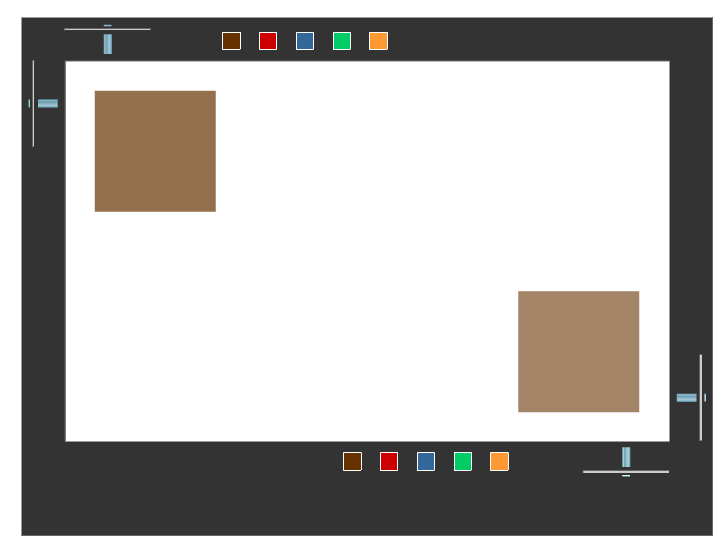
PROUN series
HOMAGE TO THE SQUARE
2001

BEAUTY
2001-02; 2010
Selling beauty products involves appeal and color branding. These products offer everything to consumers from youth to new identities. The products are packaged in attractive boxes and plastic dispensers, making them both portable and precious. Ironically, each product promises to go far beyond the skin, yet proclaims that it is ‘for external use only.’
In this series, barcodes from Clinique and Revlon products are offset with their textual disclaimers. One field reads as a conceptual statement and the other mimics the construction of a hard-edge silkscreen. Together, the paired fields critique the false solaces these products offer to viewers and consumers.
2001-02; 2010
Selling beauty products involves appeal and color branding. These products offer everything to consumers from youth to new identities. The products are packaged in attractive boxes and plastic dispensers, making them both portable and precious. Ironically, each product promises to go far beyond the skin, yet proclaims that it is ‘for external use only.’
In this series, barcodes from Clinique and Revlon products are offset with their textual disclaimers. One field reads as a conceptual statement and the other mimics the construction of a hard-edge silkscreen. Together, the paired fields critique the false solaces these products offer to viewers and consumers.
|
Every Bus Stop in Surrey, BC
2003-04 Influenced by previous works such as Simon Patterson’s “The Great Bear,” Ed Ruscha’s photobooks, and, the works of Bernd and Hilla Becher and Alan Sekula, Sylvia was interested in challenging audiences’ perceptions of how information is understood, consumed, documented and interpreted. On a formal level her project’s documents explore ideas and relationships of image and colour, while also examining issues around archiving and information architecture. The project, a large scale, gridded composite of every bus stop in Surrey, BC, Canada presents a blizzard of site-specific info which becomes an informal portrait of the city and its topography. |
EKNewTown.com
2005-06
East Kilbride (EK) is Scotland’s first New Town and illustrates a bold negotiation between traditional garden city planning and the emergence of innovative Modernist design strategies for civic living. Beginning in 2005, East Kilbride’s Modernist town plans would dramatically change through a re-modernisation programme involving the sale and demolition of many of the town’s original civic and school dwellings. As an artist she adopted a bold conceptual strategy in dialogue with J.Keith Donnelly, the last New Town artist in East Kilbride and Arts Officer for South Lanarkshire, to make the entire town into her artwork by documenting every civic Modernist building slated for demolition. In so doing, she started revealing East Kilbride’s visionary urban plan, and concurrently the role of art in representing a physical place as a social agent.
2005-06
East Kilbride (EK) is Scotland’s first New Town and illustrates a bold negotiation between traditional garden city planning and the emergence of innovative Modernist design strategies for civic living. Beginning in 2005, East Kilbride’s Modernist town plans would dramatically change through a re-modernisation programme involving the sale and demolition of many of the town’s original civic and school dwellings. As an artist she adopted a bold conceptual strategy in dialogue with J.Keith Donnelly, the last New Town artist in East Kilbride and Arts Officer for South Lanarkshire, to make the entire town into her artwork by documenting every civic Modernist building slated for demolition. In so doing, she started revealing East Kilbride’s visionary urban plan, and concurrently the role of art in representing a physical place as a social agent.
PICTURE: BEYOND A PHOTOGRAPH
2008
Semiotic ASCII art piece exhibited as a radio play about photographic image making
Obalne Galerije, Piran, Slovenia | Curator: Vasja Nagy
GLOCAL
2008-2010
Artist in Residence, Cultural Olympiad Project, Canada
Glocal (global + local) was both a call to participation and a process that created a series of independent new media artworks. Glocal was an open-source database and curatorial project profiling Flickr images from the public relating to their urban environment.
Artists and the public were invited to contribute images to form a large photo Flickr pool that resulted in a series of media installations. The resulting works led to an interactive media screen room produced for the Surrey Art Gallery and the Surrey Art Gallery Urban screen. The work highlighted participants’ abilities to metaphorically and physically illustrate how ‘alt views’ can define and shift how we experience the world. The artist team (Borda, Levin, &Thorp) were directly involved in creating the architectural framework which defined how this image database and networked piece would be staged for various media platforms.
Related outputs:
Sylvia curated a show of the Glocal project at the Museum of Arts Vojvodina: Space for New Dialogue - Balkans Biennale (images below from the opening event)
2008-2010
Artist in Residence, Cultural Olympiad Project, Canada
Glocal (global + local) was both a call to participation and a process that created a series of independent new media artworks. Glocal was an open-source database and curatorial project profiling Flickr images from the public relating to their urban environment.
Artists and the public were invited to contribute images to form a large photo Flickr pool that resulted in a series of media installations. The resulting works led to an interactive media screen room produced for the Surrey Art Gallery and the Surrey Art Gallery Urban screen. The work highlighted participants’ abilities to metaphorically and physically illustrate how ‘alt views’ can define and shift how we experience the world. The artist team (Borda, Levin, &Thorp) were directly involved in creating the architectural framework which defined how this image database and networked piece would be staged for various media platforms.
Related outputs:
Sylvia curated a show of the Glocal project at the Museum of Arts Vojvodina: Space for New Dialogue - Balkans Biennale (images below from the opening event)
MID PERIOD DIGITAL and ONGOING MEDIA ART PROJECTS
Cameras and Watercolour Sunsets
Key production periods: 2009-2010, 2012-13, 2015-16, 2018-present
Cameras and Watercolour Sunsets is an on-going series in which a camera is placed on the horizon of each watercolour ground. The cameras' lenses hover in place of the sun in these digitally constructed montages.
Like Magritte’s Ceci n'est pas une pipe this series offers the viewer a set of contradictions to negotiate in order to understand the work. The cameras and watercolour paintings are referenced by name in the title but by medium are reproductions, which do not "satisfy emotionally” the actual objects and/or depicted events.
Artworks in this series are constructed from amateur photographs of cameras and watercolour paintings found from online auction websites. Sylvia has called these artworks ‘digital ready mades.’ As digital constructs from found web photographs, the series also collapses time, media, and locations together. The series draws on the metaphoric notion that sunsets can also allude to 'an end.' Indeed the juxtaposition of the analog cameras depicted with the sunsets references the slow change over to digital recording techniques and the end to the days wherein film cameras were favoured by amateur photographers.
Cameras and Watercolour Sunsets
Key production periods: 2009-2010, 2012-13, 2015-16, 2018-present
Cameras and Watercolour Sunsets is an on-going series in which a camera is placed on the horizon of each watercolour ground. The cameras' lenses hover in place of the sun in these digitally constructed montages.
Like Magritte’s Ceci n'est pas une pipe this series offers the viewer a set of contradictions to negotiate in order to understand the work. The cameras and watercolour paintings are referenced by name in the title but by medium are reproductions, which do not "satisfy emotionally” the actual objects and/or depicted events.
Artworks in this series are constructed from amateur photographs of cameras and watercolour paintings found from online auction websites. Sylvia has called these artworks ‘digital ready mades.’ As digital constructs from found web photographs, the series also collapses time, media, and locations together. The series draws on the metaphoric notion that sunsets can also allude to 'an end.' Indeed the juxtaposition of the analog cameras depicted with the sunsets references the slow change over to digital recording techniques and the end to the days wherein film cameras were favoured by amateur photographers.
FARM TABLEAUX
2013-15
The Farm Tableaux series captures farmers enacting routine activities, but unlike conventionally staged photographs, the observer can explore these framed compositions within an interactive Google Street View landscape.
The dimensional photographs for Farm Tableaux were created in collaboration with Google Trusted Photographer, John M Lynch. Without his support, the artwork could not be created or mounted into the Google engine. Each Tableaux scene consists of a number of individual still frames capturing farmer portraits and landscape views. These stills are stitched to create a ‘panosphere’ that has a panoramic effect and offers the viewer a 360 degree surround image of the environment from a fixed perspective.
In the tableaux Sylvia has discretely positioned herself in the periphery of each of the farm scenes, thereby, acting as witness to the unfolding work being documented, whilst also creating a visual signature and presence within the artworks. The below image is a self-assisted portrait taken at Medomist Farms Ltd, Surrey, BC, Canada.
2013-15
The Farm Tableaux series captures farmers enacting routine activities, but unlike conventionally staged photographs, the observer can explore these framed compositions within an interactive Google Street View landscape.
The dimensional photographs for Farm Tableaux were created in collaboration with Google Trusted Photographer, John M Lynch. Without his support, the artwork could not be created or mounted into the Google engine. Each Tableaux scene consists of a number of individual still frames capturing farmer portraits and landscape views. These stills are stitched to create a ‘panosphere’ that has a panoramic effect and offers the viewer a 360 degree surround image of the environment from a fixed perspective.
In the tableaux Sylvia has discretely positioned herself in the periphery of each of the farm scenes, thereby, acting as witness to the unfolding work being documented, whilst also creating a visual signature and presence within the artworks. The below image is a self-assisted portrait taken at Medomist Farms Ltd, Surrey, BC, Canada.
Kissing Project
2017
Sylvia explored how image-making challenges and enhances our experience of place, time, culture and perception through the delivery of her ‘Kissing Project.’ The used the metaphor and action of a ‘kiss’ as a platform to enhance the existing image of Nelson.
Her project, 14 portraits of couples kissing in Nelson, BC has been completed using commercially available 360' recording cameras. Through her panorama recordings, the city itself is now a living art installation, one that anyone can access through Google Street View.
2017
Sylvia explored how image-making challenges and enhances our experience of place, time, culture and perception through the delivery of her ‘Kissing Project.’ The used the metaphor and action of a ‘kiss’ as a platform to enhance the existing image of Nelson.
Her project, 14 portraits of couples kissing in Nelson, BC has been completed using commercially available 360' recording cameras. Through her panorama recordings, the city itself is now a living art installation, one that anyone can access through Google Street View.
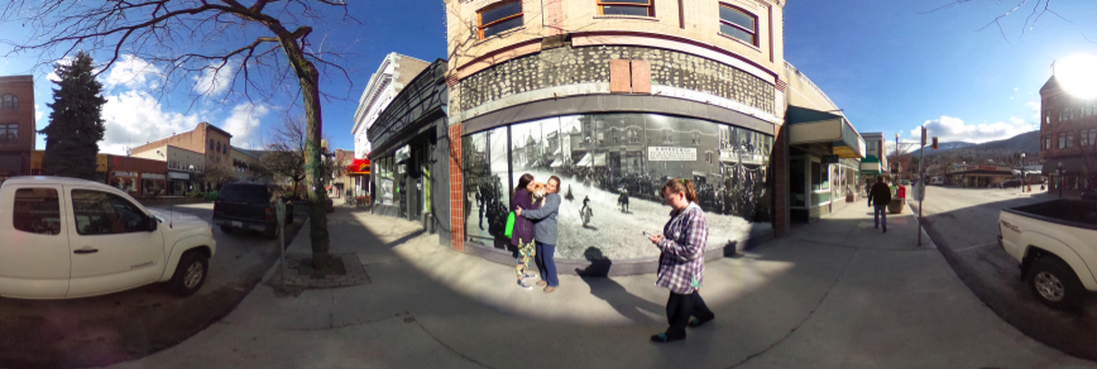
RECENT DIGITAL ART PROJECTS (2020 - present)
Internet of Nature
2020-21
In collaboration with City of Dundee Public Art and J.Keith Donnelly
Internet of Nature is the world’s first virtual park systems. It features parks from across the City of Dundee, Scotland as seen from a ground perspective of wild animal residents including hares, foxes and badgers. Captured landscapes are specifically composed and uploaded into the Google Street View Engine for serendipitous discovery. In this format, the artworks become similar to Felix Gonzalez Torres’ open multiples –generously available for audiences to navigate, experience, contemplate, and take-away a component. These online artworks are designed to be observed in intimate detail in the same way someone might take a candy from a Torres installation and their take-away involves in viewers locating and framing their own tangible view of the art in each panorama.
Internet of Nature artworks are created both as conceptual portraits of Nature and an archive of Dundee’s park systems. Critically in a time of climate change, these Nature portraits serve as aide memoires of a changing space – an index of what is present. Will future temperature variations and extreme weather events change Dundee’s urban ecologies in the future? Much like the limitation of photographic images themselves capturing a temporal moment, Internet of Nature opens up questions about how we see, who and what is present in the environment.
This series was exhibited and launched at COP26. Access Internet of Nature series on Google Street View through the following URL: https://www.google.com/maps/contrib/108126573637843214436/photos/@56.4767542,-2.9440911,12z/data=!3m1!4b1!4m3!8m2!3m1!1e1?entry=ttu
Arts review - Photomonitor Winter edition 2021
https://photomonitor.co.uk/essay/internet-of-nature-touring-the-parks-of-dundee-scotland/
In collaboration with City of Dundee Public Art and J.Keith Donnelly
Internet of Nature is the world’s first virtual park systems. It features parks from across the City of Dundee, Scotland as seen from a ground perspective of wild animal residents including hares, foxes and badgers. Captured landscapes are specifically composed and uploaded into the Google Street View Engine for serendipitous discovery. In this format, the artworks become similar to Felix Gonzalez Torres’ open multiples –generously available for audiences to navigate, experience, contemplate, and take-away a component. These online artworks are designed to be observed in intimate detail in the same way someone might take a candy from a Torres installation and their take-away involves in viewers locating and framing their own tangible view of the art in each panorama.
Internet of Nature artworks are created both as conceptual portraits of Nature and an archive of Dundee’s park systems. Critically in a time of climate change, these Nature portraits serve as aide memoires of a changing space – an index of what is present. Will future temperature variations and extreme weather events change Dundee’s urban ecologies in the future? Much like the limitation of photographic images themselves capturing a temporal moment, Internet of Nature opens up questions about how we see, who and what is present in the environment.
This series was exhibited and launched at COP26. Access Internet of Nature series on Google Street View through the following URL: https://www.google.com/maps/contrib/108126573637843214436/photos/@56.4767542,-2.9440911,12z/data=!3m1!4b1!4m3!8m2!3m1!1e1?entry=ttu
Arts review - Photomonitor Winter edition 2021
https://photomonitor.co.uk/essay/internet-of-nature-touring-the-parks-of-dundee-scotland/
2020-2022
LIVING ARTWORKS - earth observation climate artworks
An ambitious digital engagement and agro-forestry development project produced by Sylvia in collaboration with Indigenous Oromo communities from Kofele, West Arsi District, Ethiopia to establish a sustainable legacy tree nursery and to use a portion of tree seedlings to form the world's first earth observation climate land artworks visible to satellite systems in the form of 'Tree circles.' Other project partners included artist, J Keith Donnelly, with support from Dundee UNESCO City of Design, KPU and the British Council.
This project was designed specifically by Sylvia and in dialogue and exchange with Indigenous collaborators to booster digitally limited communities to have the capacity to harness global tools, Google Earth, through available media channels, mobile phone browsers, as a way to access earth observation and spatial data.A total of three earth observation climate land artworks were planted as outdoor community resources to provide shade and cooling at local elementary schools in Ethiopia. Additionally earth climate observation artworks have since been individually planted by Ethiopian youth who have gone on to use techniques from this project to seed Tree circles and different designs at their own family homesteads.
This project’s simple re-use of frugal and existent tools received unexpected recognition and was later supported by NASA as an educational partner. NASA has offered to include the earth observation artwork in the tracking data points of the International Space Station and to make this data available to communities. It also builds on Sylvia's interest to democratize, build community infrastructure and recognize intersectionality in the World Wide Web.
The concept of planting flora patterned forms to scale for satellite tracking remains a world’s first and was also recognized at COP26. This idea of flora satellite artworks was generously shared by the collaborators with COP26 delegations as both a process and a tool and has started the emergence of a global phenomenon to undertake ‘plant graffiti’. Plant graffiti initiatives aim to empower other global south communities to plant, monitor, and track their own emergent forests and its successes in promotion of biodiversity growth. The concept of international Tree Circles has grown out of this initiative and examples of Tree Circles can be seen in South America, Africa, and the USA, see: https://www.earth-art-studio.com/contributors.html
ABOUT THE ARTIST'S DIGITAL ART PRACTICE
As an artist, Sylvia enjoys reworking cultural symbols and creating hybridized products or visuals from historical sources.
Her projects involve cultural research into topics like comprehending compositional space and analyzing socio-political ideologies of a particular time. Sylvia takes historic visual components(concepts, compositions, etc) which become the foundation of her own aesthetic vocabulary. The resulting works are constructs reflecting past vocabularies held in juxtaposition with contemporary values. Sylvia's digital artworks cause audiences to do double takes. The resulting images appear familiar but the messages associated with them are often unfamiliar.
Sylvia enjoys the challenge of creating art where the amount of questions addressed to the piece inform the viewer about why the piece was produced. Her works question the viewer’s own judgment values and can accommodate contradictory readings of being art or not, for example:
What does it mean if the viewer sees the work as mechanical, AI computer generated +/ as part of global media platforms?
What is at stake if the piece is misread?
How do digital aesthetics become art?
If the work is considered as art than how does its aesthetic vocabulary and composition create meaning?
Is it possible for an art piece to hold several contradictory values?
In recent Sylvia is further interested in addressing these questions through her digital projects:
How can communities be engaged in digital collaborations and co-authorship to create meaningful intersectionality on the Web?
How can digital art be used as a tool to create real solutions to civic infrastructure problems?
Through these processes Sylvia attempts to bridge and build audiences to appreciate both digital art as a form and as a social practice.
RELATED LECTURES + ONGOING RESEARCH
Sylvia continues to lecture and research extensively about the role of digital art in framing conversations about civil society and needed actions in relation to nature conservation and climate challenges.
She has presented papers at RE:SOURCE Climate panel (Venice 2023), EcoCities, Arts and Climate Solutions (Rotterdam 2022), International Union of Conservation of Nature, UN World Forum, (September 2016) to being a keynote at the Green Lab Alliance EU network with TJ Demos in Sweden (2014). At photographies conference (2017) chaired by Liz Wells and David Bate she spoke directly about the impact of digital photography on climate change. For the Women4Climate/C40Cities network group since 2019, Sylvia has continued to expand, lecture and explore how digital consumption needs to be monitored. She believes when we have a better understanding of how our social networked lives affect our carbon footprint, we can make even greater changes that can positively move us forward in the fight against climate change.
PAST CULTURAL ENGAGEMENT PROJECTS
CURATORIAL
Sylvia worked from 2000-2003 in tandem with Gu Xiong to develop “esc” an exhibition of select young artists, exploring issues of change and transformation from the perspective of their own aesthetic cultural practice, in an effort to reach an understanding of their complex identities as electronic authors exploring aspects of Asian diaspora experiences within Canada.
Sylvia continues to lecture and research extensively about the role of digital art in framing conversations about civil society and needed actions in relation to nature conservation and climate challenges.
She has presented papers at RE:SOURCE Climate panel (Venice 2023), EcoCities, Arts and Climate Solutions (Rotterdam 2022), International Union of Conservation of Nature, UN World Forum, (September 2016) to being a keynote at the Green Lab Alliance EU network with TJ Demos in Sweden (2014). At photographies conference (2017) chaired by Liz Wells and David Bate she spoke directly about the impact of digital photography on climate change. For the Women4Climate/C40Cities network group since 2019, Sylvia has continued to expand, lecture and explore how digital consumption needs to be monitored. She believes when we have a better understanding of how our social networked lives affect our carbon footprint, we can make even greater changes that can positively move us forward in the fight against climate change.
PAST CULTURAL ENGAGEMENT PROJECTS
CURATORIAL
Sylvia worked from 2000-2003 in tandem with Gu Xiong to develop “esc” an exhibition of select young artists, exploring issues of change and transformation from the perspective of their own aesthetic cultural practice, in an effort to reach an understanding of their complex identities as electronic authors exploring aspects of Asian diaspora experiences within Canada.
EDUCATIONAL DELIVERY
Sylvia also developed a number of ground-breaking University modules exploring digital authorship and curation at Langara College, University of British Columbia and Emily Carr University of Art and Design during the 2000 period. Additionally she would become a well-regarded graphic user interface designer, and taught seminal visualisation courses as part of Software system design and MSc Computer degree programs offered at the British Columbia Institute of Technology between 2002-04.
Her interests continue to this date in examining the social contexts of how, where, and why new media art trends emerge and evolve across different users.
Past key academic projects include:
(1) Scripted - an exhibition produced in 2004 examining how the digital arts were being adapted and utilised by senior BFA undergrads at Emily Carr University and the University of British Columbia.
(2) Digital Visions was a full curatorial programme that Sylvia founded, and chaired wherein senior students examined the role of media artists in continuing to evolve the vocabularies, processes and aesthetic of digital art. This programme ran between 2002-2005 with over 50 peer review essays published examining the development of media arts from across North America, Europe and Asia.
During her period as a digital arts lecturer, Sylvia was extremely active in speaking about digital art as an independent form. Some of her key lectures included:
Re:Mote exhibition, ISEA 2006; CRUMB: Newcastle Art Forum (June 3, 2006) with Charlie Gere, Jon Ippolito and Honor Hager; College Arts Association, New Media Caucus, Boston: Keynote panelist; 2005 Refresh Conference, Banff New Media Institute and Humboldt University Berlin: Panelist; Electronic Media Group (Stanford) AIC, Minneapolis, USA(2005);
Electronic Social Culture Exhibition, A Space, Toronto: Curator’s talk and discussion (2004); MUTATIONS < > CONNECTIONS Cultural (Ex)Changes in Asian Diasporas International Symposium and exhibition Centre A (2005): Chair; National Research Council, Institute for Information Technology: Keynote speaker (2005); Banff New Media Institute (BNMI) Skinning Our Tools: Keynote comments and speaker panelist (2003); Banff New Media Institute (BNMI) BRIDGES Consortium Two Theme: Cross-Disciplinary (2002); 4th International Cuban Digital Art Symposium Art Perceptions, Havana,Cuba: Guest panelist (2002); 02.02. Digital Dystopias, University of California Los Angeles, Dept of Art History: Lecturer (2002); Museums and the Web (2001) Seattle, Washington, Panelist; Museum Computer Network Conference '98, Virtual Exhibitions : The Ultimate Community Experience, Guest panelist (1998)
CULTURAL DATA + SHARING
CANADIAN HERITAGE INFORMATION NETWORK
From between 1996 to 2002 Sylvia worked as an independent innovative media strategist and developer for the Canadian Heritage Information Network (CHIN). She and her team developed a number of early initiatives that extended how interactive and participatory design could facilitate knowledge transfer. Notably she developed a star gazer application for mobile phones for CHIN, Montreal Planetarium and Bell Sympatico in 2001.
INDIGENOUS KNOWLEDGE PARTNERSHIPS
During her period working for CHIN she was appointed the lead media and content producer (1998-2000) for the Canada Pavilion's exhibition and video kiosk systems for Expo 2000 collaborating directly with the Haida Community. Her successes in visualising, collaborating with Haida and engaging audiences in the presentation of First Nations cultural materials was very well received. A series of articles were written about this partnership and also extended to other contract opportunities.
She also would develop during this period relationships with the Smithsonian, Getty and the University of Washington to advise on graphic user interface systems and/or develop cultural interactive projects. In particular, she created a CDROM (2002) for the University of Washington working with Indigenous knowledge holders, curators and Marquand Press that enabled users to examine SW textile weaving in detail.
Re:Mote exhibition, ISEA 2006; CRUMB: Newcastle Art Forum (June 3, 2006) with Charlie Gere, Jon Ippolito and Honor Hager; College Arts Association, New Media Caucus, Boston: Keynote panelist; 2005 Refresh Conference, Banff New Media Institute and Humboldt University Berlin: Panelist; Electronic Media Group (Stanford) AIC, Minneapolis, USA(2005);
Electronic Social Culture Exhibition, A Space, Toronto: Curator’s talk and discussion (2004); MUTATIONS < > CONNECTIONS Cultural (Ex)Changes in Asian Diasporas International Symposium and exhibition Centre A (2005): Chair; National Research Council, Institute for Information Technology: Keynote speaker (2005); Banff New Media Institute (BNMI) Skinning Our Tools: Keynote comments and speaker panelist (2003); Banff New Media Institute (BNMI) BRIDGES Consortium Two Theme: Cross-Disciplinary (2002); 4th International Cuban Digital Art Symposium Art Perceptions, Havana,Cuba: Guest panelist (2002); 02.02. Digital Dystopias, University of California Los Angeles, Dept of Art History: Lecturer (2002); Museums and the Web (2001) Seattle, Washington, Panelist; Museum Computer Network Conference '98, Virtual Exhibitions : The Ultimate Community Experience, Guest panelist (1998)
CULTURAL DATA + SHARING
CANADIAN HERITAGE INFORMATION NETWORK
From between 1996 to 2002 Sylvia worked as an independent innovative media strategist and developer for the Canadian Heritage Information Network (CHIN). She and her team developed a number of early initiatives that extended how interactive and participatory design could facilitate knowledge transfer. Notably she developed a star gazer application for mobile phones for CHIN, Montreal Planetarium and Bell Sympatico in 2001.
INDIGENOUS KNOWLEDGE PARTNERSHIPS
During her period working for CHIN she was appointed the lead media and content producer (1998-2000) for the Canada Pavilion's exhibition and video kiosk systems for Expo 2000 collaborating directly with the Haida Community. Her successes in visualising, collaborating with Haida and engaging audiences in the presentation of First Nations cultural materials was very well received. A series of articles were written about this partnership and also extended to other contract opportunities.
She also would develop during this period relationships with the Smithsonian, Getty and the University of Washington to advise on graphic user interface systems and/or develop cultural interactive projects. In particular, she created a CDROM (2002) for the University of Washington working with Indigenous knowledge holders, curators and Marquand Press that enabled users to examine SW textile weaving in detail.
